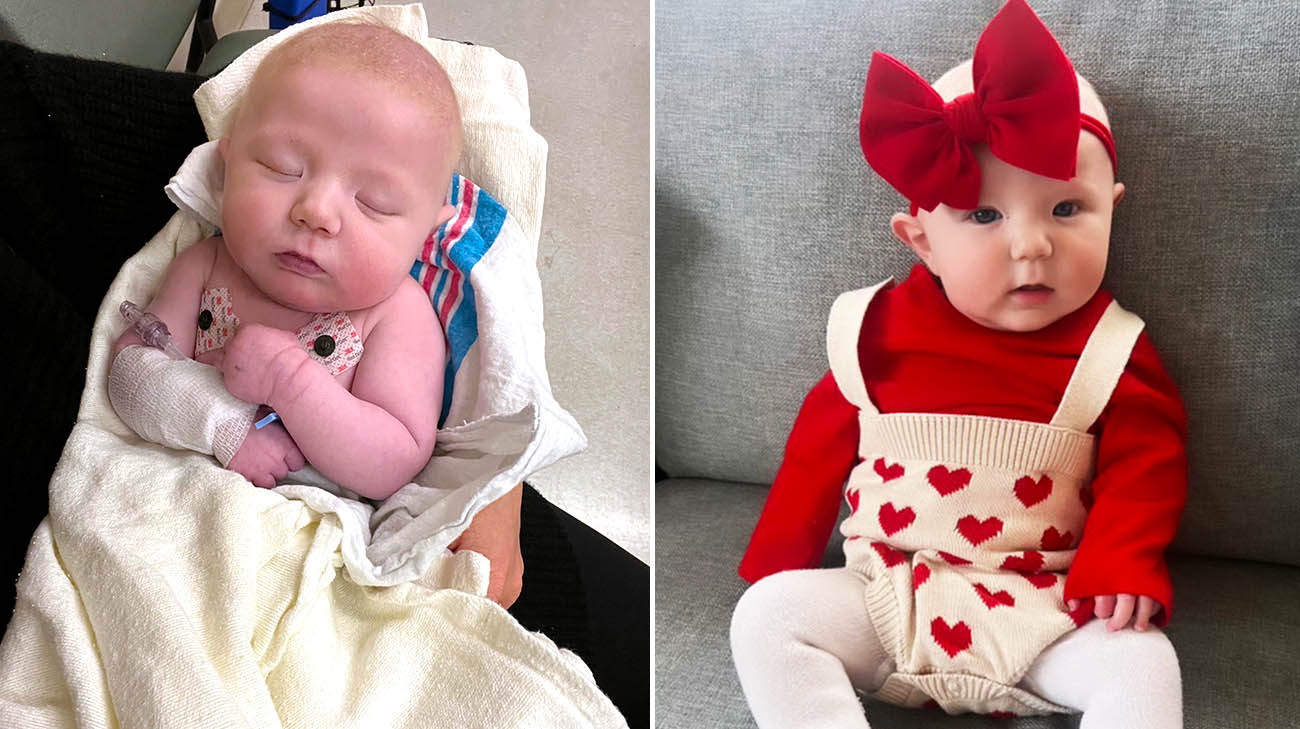
During a prenatal ultrasound, Jaclyn Drager had an uncomfortable feeling something was wrong. Moments later, she and her boyfriend, Ken Nelson, received the unexpected news. At 19 weeks gestation, about five months prior to her delivery date, the imaging test revealed Jaclyn’s unborn baby, Lucy, had developed a serious congenital heart disease (CHD).
“We were in disbelief,” recalls Jaclyn, whose two older children, daughter Elise, age 20, and son Easton, age 12, were born without health issues. “I had no idea at that time 1 in 100 babies are born with some sort of CHD. It was shocking.”
A subsequent fetal echocardiogram confirmed the diagnosis. Lucy’s CHD was a condition called tetralogy of Fallot (TOF), which was paired with a less common problem called pulmonary atresia. TOF is comprised of four related heart abnormalities that impair the patient’s ability to pump blood to their lungs, affecting the oxygen levels throughout the entire body. With this diagnosis, there is a hole in the heart called a ventricular septal defect (VSD), significant shifting of the vessels coming off the heart, thickness of the right pumping chamber and obstruction of the connection from the heart to the lungs. Babies with pulmonary atresia have a pulmonary valve that doesn’t develop normally or stays blocked after birth. Without a working pulmonary valve, blood can’t flow through the pulmonary artery to reach the lungs, where it gets oxygen. Instead, oxygen-poor blood goes throughout the body.
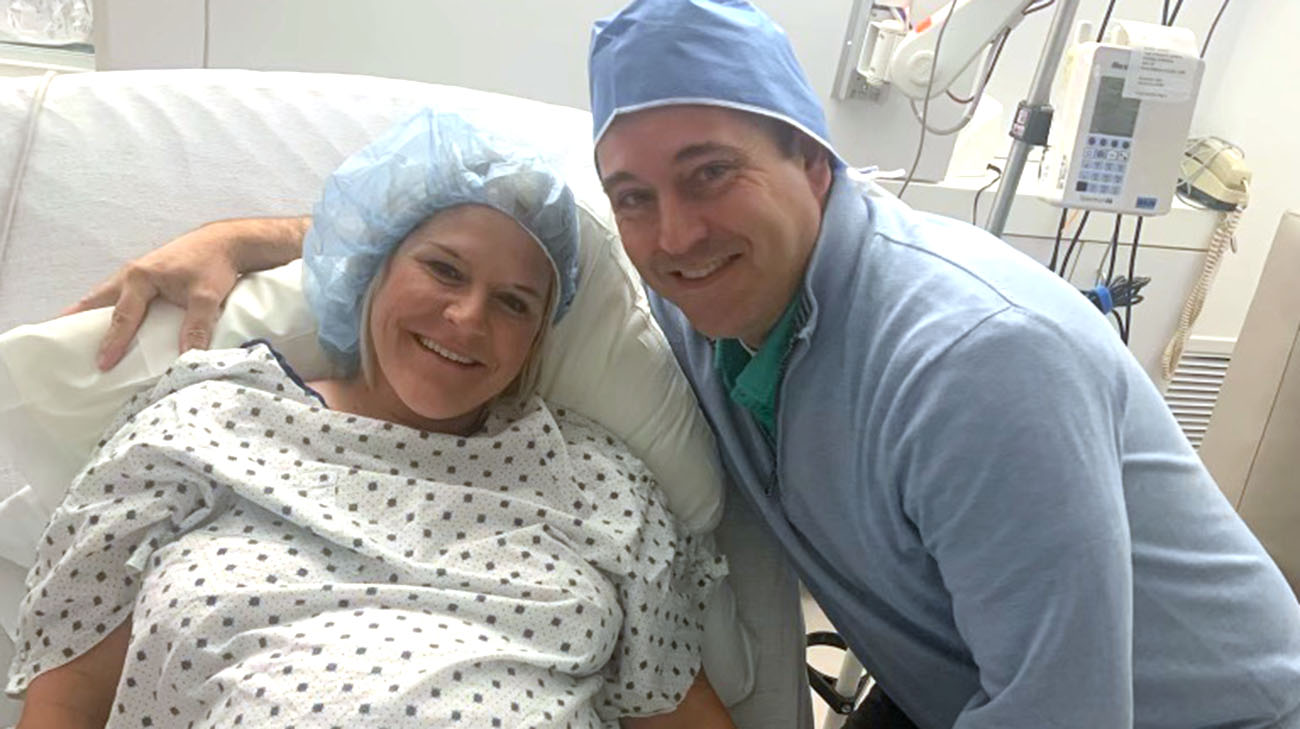
Jaclyn delivered Lucy one day before her scheduled C-section. (Courtesy: Jaclyn Drager)
Jaclyn immediately contacted a friend, whose elementary school-aged daughter was also born with CHD. The friend urged her to contact Cleveland Clinic Children’s. Within a week, Jaclyn and Ken were able to meet with pediatric cardiologist Clare O’Hare, MD, who is a specialist in fetal cardiac imaging in the Fetal Care Center.
Explains Jaclyn, “Dr. O’Hare saw how scared we were and never rushed us, answering all our questions. She’s the reason we chose Cleveland Clinic for Lucy’s birth and subsequent treatment.”
According to Dr. O’Hare, she and her colleagues – including pediatric and congenital heart surgeon Hani Najm, MD, who would ultimately perform corrective surgery on Lucy a few months after her birth – mapped out a plan that guided Jaclyn through the remainder of her pregnancy. The hope was the pregnancy would go to full term so Lucy would be as large and strong as possible before treatment would begin.
“Babies born with TOF need surgery to correct the problem, usually before six months of age,” says Dr. O’Hare. “We try to get the kids to grow as much and be as strong as they can, because then we have more options available for effective surgical repair. We knew Lucy’s case was special because of her specific anatomy and would require an additional intervention before she left the hospital after being born.”
One day before her scheduled cesarean section, Jaclyn went into labor. Lucy was born on October 16, 2023, weighing 6 pounds, 8 ounces. At that point, Lucy’s medical team had two choices: perform the full corrective surgical procedure or perform a temporary procedure to insert a stent in a critical blood vessel outside of the heart to keep it open until the more complex surgery could occur a couple months later. Drs. O’Hare and Najm, working in tandem with the specialized Cleveland Clinic Children’s Infant High-Risk Program team, chose the latter approach so Lucy’s body could grow larger and be more tolerant of the complex surgical procedure.
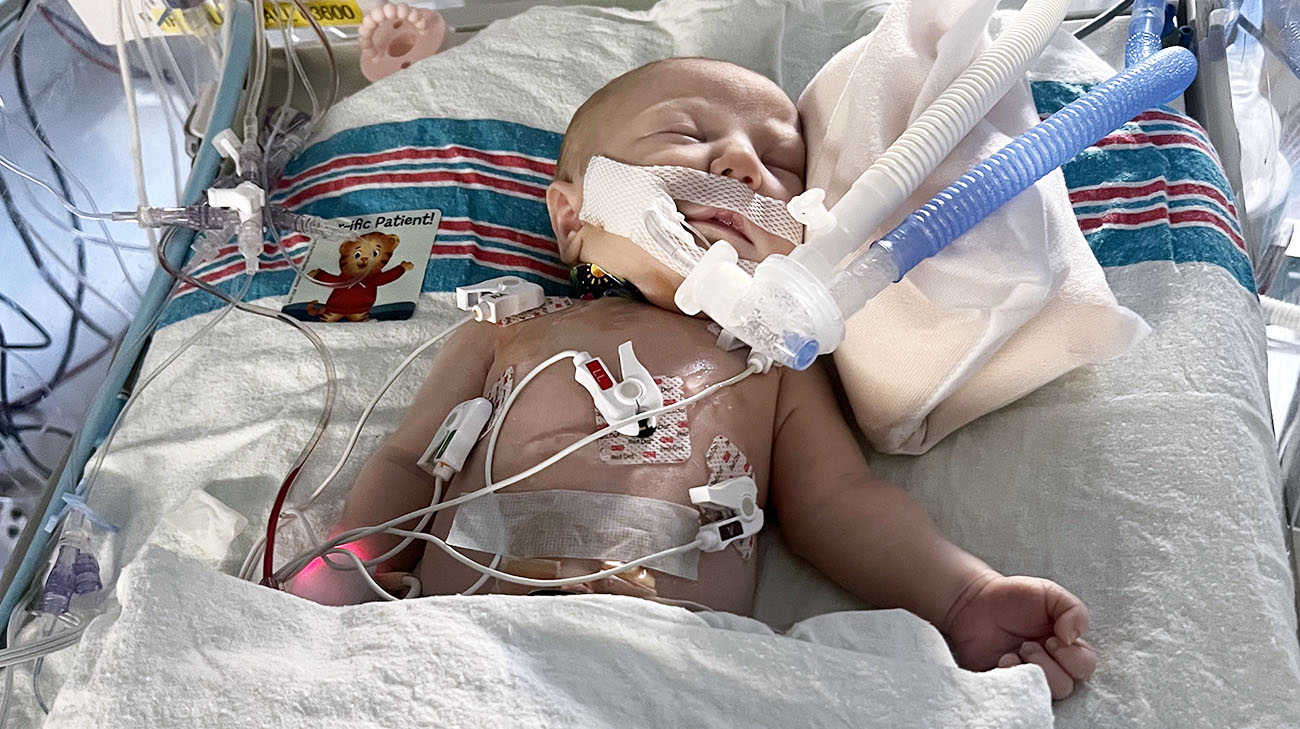
Doctors performed a temporary procedure on Lucy where they inserted a stent in a critical blood vessel outside of her heart to keep it open until the more complex surgery could occur a couple months later. (Courtesy: Jaclyn Drager)
Adds Dr. O’Hare, “With the stent, Lucy’s blood could flow normally through the aorta, with some going to the lungs and some to the body. With this anatomy, we needed to assess her oxygen saturation levels every day, so we could determine when she would be ready for surgery.”
That required Lucy to be closely monitored, even after she went home 10 days after the stent was inserted.
“You feel like a nurse, but I just wanted to be a mom with her. We set alarms – different ones at different times – for her medicines and measurements. It was hard, but you get into a routine. And the team was fantastic,” states Jaclyn.
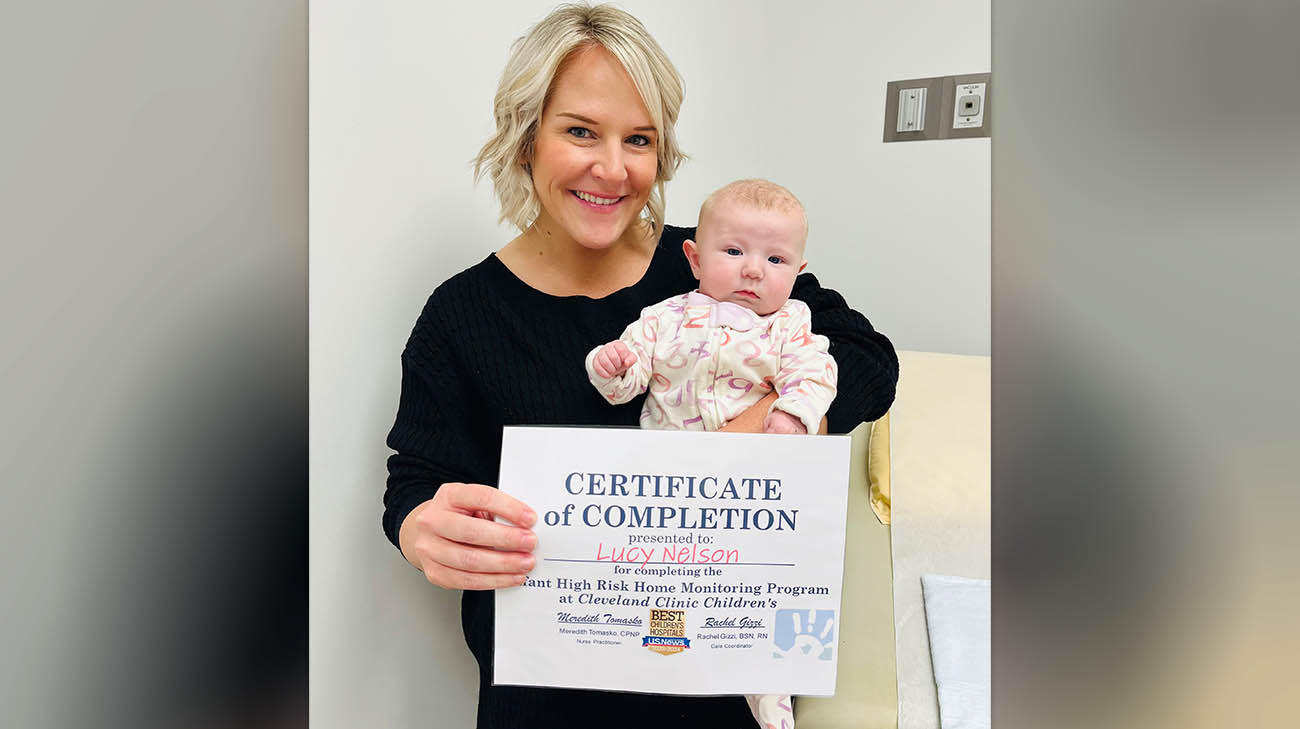
Jaclyn receiving Lucy's certificate of completion from Cleveland Clinic Children's Infant High-Risk Program. (Courtesy: Jaclyn Drager)
Jaclyn and Ken had all the tools and training needed to properly monitor and care for Lucy thanks to the Infant High-Risk Program, which helps pediatric patients with certain heart conditions and their parents make the transition from inpatient hospital care to living at home. That included a thorough briefing on home monitoring, equipment and devices to monitor Lucy’s condition, a pulse oximeter and heart rate monitor to check her vital signs, a scale, a touchscreen tablet to instantly connect data points back to the care team and a reference binder detailing procedures and other information.
“The program is a very important part of treatment for infants, like Lucy, who are high-risk,” says Dr. O’Hare. The program receives support from a Cleveland Clinic Catalyst Grant to help cover equipment and technology enhancement costs. Catalyst Grants are funded annually by thousands of gifts of all sizes from donors. The competitive grants are awarded to caregivers with ideas to improve the lives of Cleveland Clinic patients, the organization and communities around the world.
Using the daily data generated through the program, and weekly in-person visits at the hospital, Dr. O’Hare and Lucy’s care team determined Lucy would need to undergo her corrective surgery at 3 months of age, a few months earlier than they originally planned since her blood oxygen levels were at a lower range.
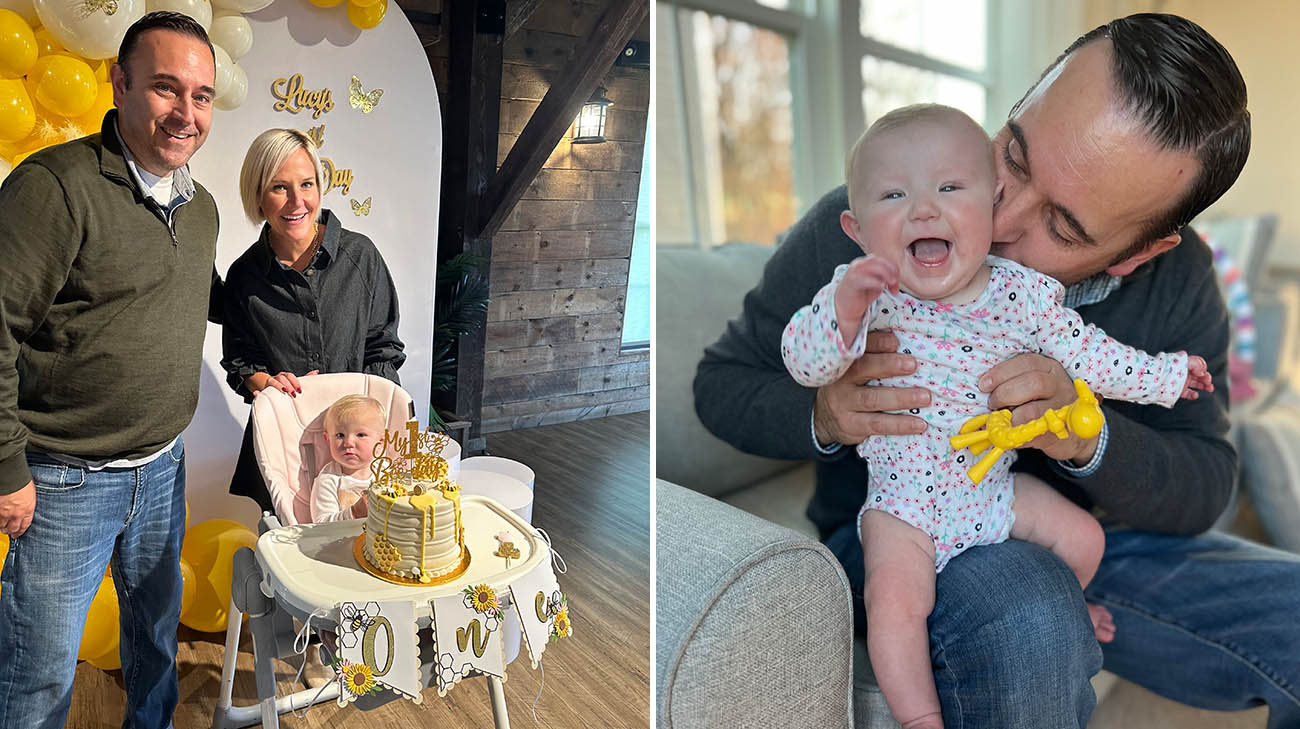
Lucy turned 1 year old on October 16, 2024. (Courtesy: Jaclyn Drager)
“Determining the type and time of surgical correction in congenital heart surgery follows many criteria depending on anatomy, physiology, weight and condition of the baby,” explains Dr. Najm. “This decision is modified to get the best outcome for the child not just early on in their life but long-term as well.”
Lucy’s surgery would require Dr. Najm to take several intricate steps, including removing the stent, patching the VSD, and inserting a right ventricle to pulmonary artery (RV-PA) conduit, which is a connective tube between the right ventricle and pulmonary artery.
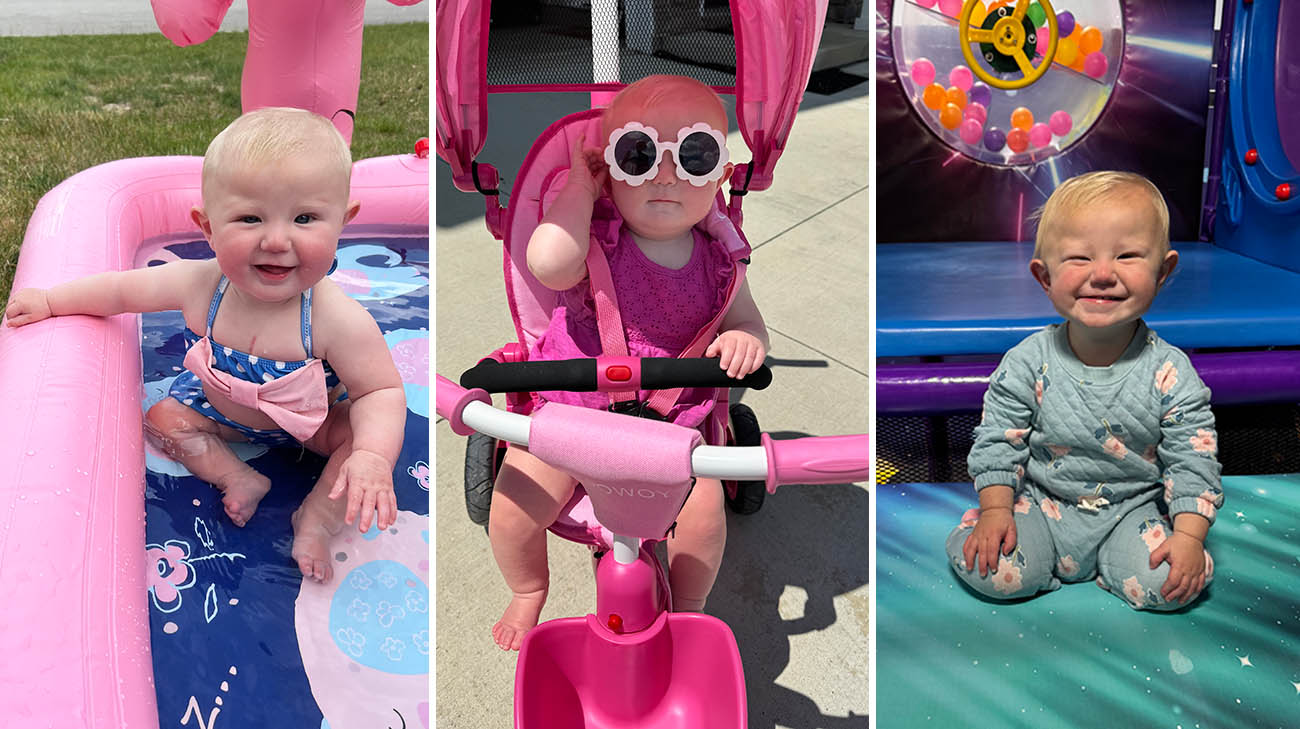
Jaclyn says Lucy continues showing great improvement. (Courtesy: Jaclyn Drager)
Jaclyn was expecting Lucy would need an extended hospital stay for recovery after the surgery. She was pleasantly surprised when Lucy was discharged five days after her 6-hour surgical procedure.
Lucy will require at least one additional surgery later in childhood to replace the conduit and pulmonary valve as she grows. However, Jaclyn says 14-month-old Lucy is doing well and shows great improvement. “She’s doing all the typical things you would expect -- walking, saying words, climbing and getting into things. We’re just so blessed.”
Related Institutes: Cleveland Clinic Children's , Heart, Vascular & Thoracic Institute (Miller Family)Patient Stories
Perseverance and Focus Help Ovarian Cancer Survivor Beat the Odds HIPEC During Surgery Helps Keep Disease Under Control
Dec 10, 2025
Boy With Advanced Liver Cancer Thriving After Lifesaving Living Organ Donation From Aunt
Dec 8, 2025
Against All Odds A Journey of Recovery After Stroke
Dec 5, 2025
“Dr. Pervez is absolutely incredible, I can’t say enough about him and the speech therapy department. And Cleveland Clinic is phenomenal. They’ve always been wonderful, and I recommend them to everyone I talk to.”


